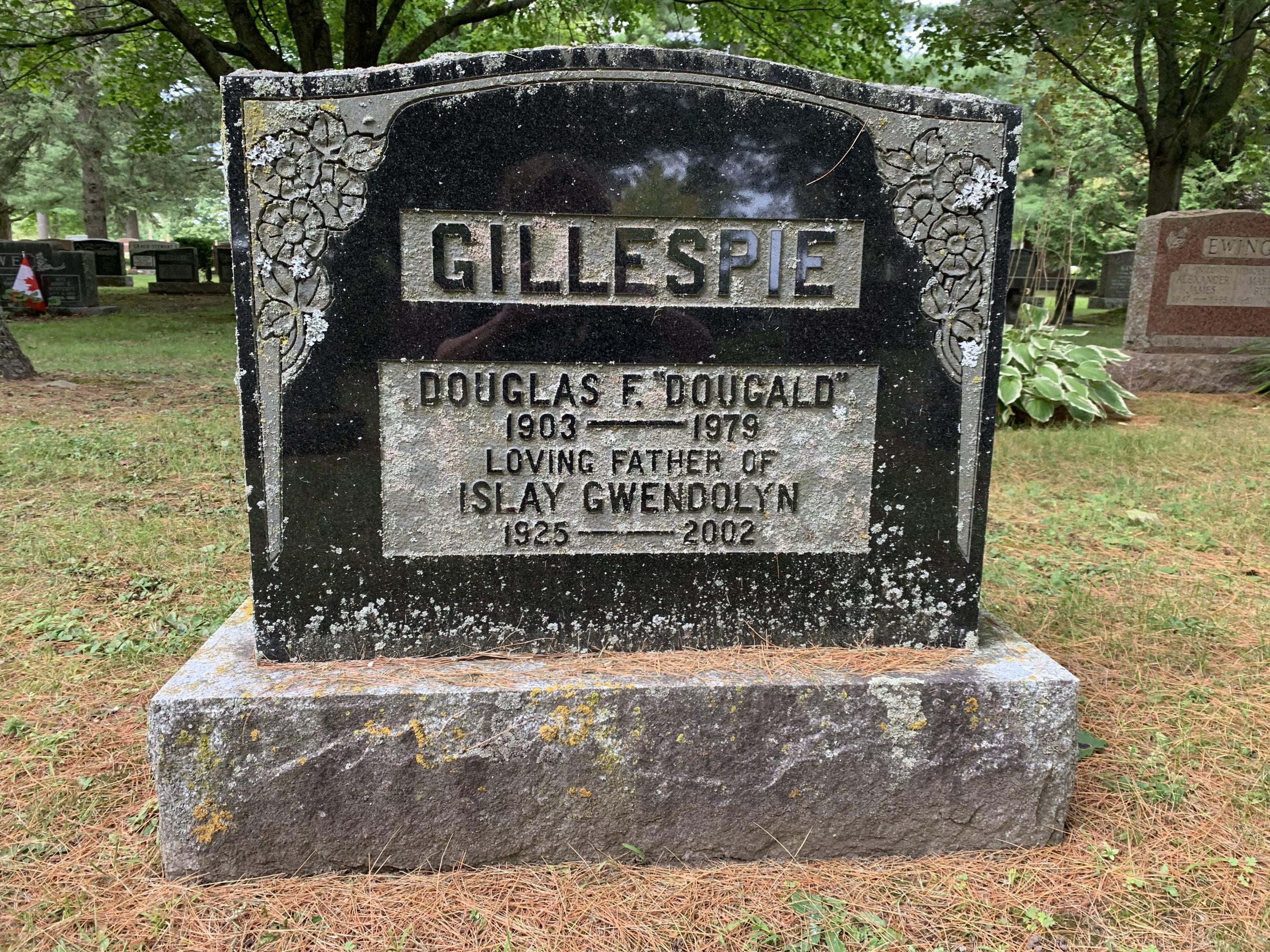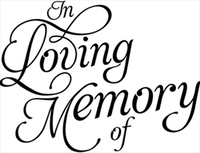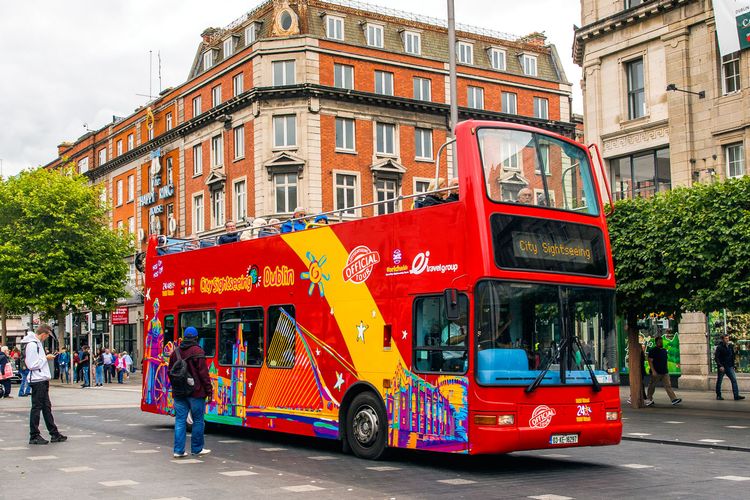
As one walks into any pubic library, it can be a daunting task to figure out where to spend one’s limited time in family history research. A few libraries may have a section dedicated to genealogy and put all their volumes and tapes into that area, but many do not. There are private libraries of course, even genealogy ones, which will prove of great worth, but this is an introduction to understanding the resources, and location of family history related subjects.

Although there may be an occasional Gillespie author on various subjects, the author’s subject may not relate to your study.. This is not the time to enjoy the fiction section, which is usually in an area by itself with books arranged by the name of the author.
Time is often a factor regarding free subscriptions that libraries may offer on their computers for access to big genealogy websites. During the pandemic, my local library only allowed half an hour visits in total. So, where might one look to access material to help in one’s ongoing search for information?
History books are listed under the wall plaque number 900, and is in the non fiction area of a library. That area uses a different coding system than in the fiction section. Most books for genealogy will be located here, not all, but a good selection. Others may be in Travel for example, or even Biographies
Hopefully, any births, marriages, deaths and census records will be in print and indexed, There may be guides in print as free handouts that will help you skim the library’s collection to see what is available in this location for this type of thing. Land records, school records, area histories in book form will be of great interest, but smaller public libraries may not have those. Look for the biggest libraries in an area for your main visit simply because they probably offer more services and content. Many delightful discoveries have been made in simple, rural libraries, so never discount them.
I once spent a week going through very early, Irish parish records without any index while at the Mormon library in Salt Lake City. Exhausting, and my eyes blurred and the effort tired me. I learned a great deal the week I spent in daily visits to this huge building. It had floors for various countries of the world and all the records from there. Many volunteers help continue the work of copying records to the main Mormon website at www.familysearch.org. The best family history library in the world, in my opinion, and certainly the largest. On their website homepage, use search to bypass the introductory wizard and pull up a world map, with links of all records to those areas. You can also inter-loan microfilm of records from this Mormon library to their church libraries around the world, but you do not have to be a Mormon to use that service. I have found them very helpful and do not hesitate about entering a Mormon church to go to their library. Times of library hours should be on a website, or sometimes posted on the front door of the church. I am not a Mormon.
Many libraries maintain an online presence, so that you do not always have to visit a library physically to obtain an understanding as to what it’s catalogue contains. I found many records while visiting the online access to the New York Public Library from my computer. Staff hired in libraries often includes a technician to maintain the library website. I have had some excellent conversations with their technicians to learn more about the systems used in that location. Systems also include the cataloguing service, which most patrons never think about. These have changed over the years and will do so again, with constant upgrades. If interested staff will explain the current ones being used.
I commend Cobourg Library in Ontario for developing its very own genealogy database, which saved me hours of work looking through card catalogues. There are still some libraries maintaining records on file cards. I copied most of them in my travels over the years, all Gillespie ones that is. But they take up so much physical space, they are are being phased out for computer usage.
May I suggest that you first chat with a Librarian as she may give you some directions and suggestions, even bring you books or videos relating to your research. That saves a lot of time figuring things out in a strange place. Ask her about the printer and if you need a card, which you may have to buy and add funds to. Do the copies go behind the staff desk for later pickup? Cash payments are rare now for printed copies. You can use only black ink printouts to save money.
A few people may bring their own handheld scanner with them, and others may prefer to use a USB stick to save files. I like the records in print, and usually found it cheaper to print them at the library rather than doing so at home in my office until I got a bigger laser one. It was only five cents a copy at the Mormon library but would have cost me 25 cents per page at home. I often find information on those printed pages long after my visit, sometimes years later. So, I always print out a whole page of information in cemetery records, instead of only the line about a Gillespie contact.
Forget hand copying records unless you have perfect script. I did that for awhile, until I later couldn’t read what I had sprawled. So frustrating, cause even if you have a copied page, old handwriting is so difficult to interpret. Always identify the source of the information you are copying. Years later you may want to revisit that record, or someone asks you for it.
If your focus is in looking at microfilm, the librarian can explain how the volumes in the area are arranged in the drawers, and show you how to operate their microfilm reader, if needed.

All the books on shelves are arranged in a specific way, and there is usually a computer available that will pull up the location of any subject, author, even book title you request. Write the number down on a slip of paper, then head to the shelves under the main coding numbers, Then look more closely to the labels on the spine of each volume. Just as 1, 2, 3 is easy to understand, so is 1.1, 1.2. 1.3 etc is also. There is a numbering order consistent throughout the library. 900, 901, 902 and sub categories for example, and volumes for history will be higher in number, especially in the 970s.
Also remember that there will be a bar code sticker somewhere on each volume, which will sound an alarm if you try to walk out of the library without checking out a book at the staff area. R on the label means reference, and these books remain in the library for viewing.
Many public libraries use the Dewey Decimal System for cataloguing their volumes, to make it easy to add more books without disturbing the others. This numbering system gives a title for subjects.
- 000 – Computer science, information and general works
- 100 – Philosophy and psychology
- 200 – Religion
- 300 – Social sciences
- 400 – Language
- 500 – Pure Science
- 600 – Technology
- 700 – Arts and recreation
- 800 – Literature
- 900 – History and geography
Printed maps are normally in a place of their own but near the main tables where people sit to work. Same with city directories and telephone books, all of which can be helpful. City directories gave names and residences long before telephones came into being. I have many maps of Gillespie properties yet to be added to this website. Early maps indicated routes that were taken in earlier times, but these trails may no longer exist. I have walked farms and woods trying to trace one across Western Ontario to Barrie. Remember the waterways played a vital role in early travel. So think of the pleasure paddling these waterways, retracing the steps of those who came before us, even famous explorers. You will probably find the map of the route in the the library.
If wanting to find the route taken by ancestors, ask a librarian who may have deeper local knowledge that will direct you to the appropriate volume, video or even web page. I was especially helped in my early beginnings of research when I didn’t really know what was available, and felt a bit lost in far away libraries.
My local library provided photography training and the equipment needed, then sent me out filming old buildings, cemeteries and even filming World War II vets. That was a very special time, as those people are now dead. I commend those libraries that are preserving the history in their region. We brought in local people to film who could expand the story of the early years in our local area and tell their own family history. They also provided old photographs, with permission to copy them. Hence, there may be events going on linked to a library that are unknown to you in a strange place, but may prove both fascinating and fulfilling. So another reason to talk with staff.
Historical volumes from the 1800s are wonderful treasures as they often include a history of each county and a listing of every land owner on their lot and concession ID. These volumes for Ontario are now online for viewing. Maps in print from other countries are worth while viewing as well, and a search engine on your computer should find them for you if they have been published online. Ireland maps are important in this regard if you want to locate your ancestor’s property.
Select a desk and chair to sit down and begin reading or writing, and take a moment to glance over nearby tables because other people may have finished with a publication that might interest you. I once discovered the earliest records for Ireland this way and would have missed them otherwise.

Usually people have learned that there is a section, often a whole floor, that is dedicated to children and youth. Remember that children’s books can also have wonderful stories of long ago, thinking of both Ann of Green Gables in Prince Edward Island series and the Laura Ingalls Wilder’s Little House On the Prairie stories of her pioneering family in the Dakotas. She lived 1867 to 1957. Family history is telling a story about the past. We are the story tellers of our generation.
Washrooms are clearly marked, and because of the pandemic some people may still wear masks for protection. Some Canadian libraries have been very helpful in helping people with obtaining vaccination record cards, even laminating mine. I know of a library that has begun an equipment rental service for tools, all in efforts to raise funds to support their work. There are knitted hats, gloves, mitts and scarves to give away for those in need, I love the magazine racks to enjoy at leisure, which usually has at least one genealogy and history magazines. Tables and comfortable chairs are available to rest and snack times. A television may provide the latest news.
Snacks may be available in vending machines, and some big city libraries offer cafeterias for meals while you are visiting. But eating is frowned upon in the stacks area, although water bottles are not anymore.
If handling very fragile newspaper or other articles, you may be required to wear cloth white gloves. It is tragic to see pages crumble from age, so these items are usually withdrawn from public view and kept in carefully controlled environmental rooms to help preserve them. They have been copied before doing that, so that the record is not lost. The best example I had of this was in Dublin at the University Library when I went to see the famous Book of Kells and there was even a security guard to watch over visitors passing through.
In some situations, you may have to request that staff bring you material that is not available in the open research area. You submit at a service desk a request on a slip of paper to identify it, and wait for it to be delivered to you. You have to be very careful with this material, that nothing is lost or damaged.
Used books and videos are sometimes marked down for sale, if there is limited demand for them. They usually appear on a cart near the entrance, or even outside, with payment by donation, which helps buy new material.
Libraries are changing slowly, trying to stay abreast of current events and society. But controverses are challenging their right even to exist. I want to thank management and staff of all the libraries I have enjoyed over the years as they have helped me uncover a world of knowledge and solved many mysteries for me.
This website represents the change from a physical place to a digital footprint in space. There is much to learn about that change, May you enjoy the protection and preservation of records about family history for Gillespies and their families from across the world. We work together to do that, and as another generation disappears, who will stand forth to keep it going?
For a wider exploration of libraries than just genealogy for the layperson, here are some important links of interest.
World Digital Library of Congress
![]()




 Red tombstones
Red tombstones White stones are being erased by the winds of time. They are priceless treasures of the past. This is the tombstone of Duncan Gillespie in Beaverton Stone Cemetery, another Islay Scot. Although difficult to read from this photo, there are four sides that have been transcribed with details included elsewhere on this website under Ontario Deaths. Sometimes these white stones had no base, and are leaning as they weaken. But here is one with two bases, before the main tombstone placed on top. Size of tombstones in any era sometimes reflected the wealth of the family and were at times were flamboyant in display. An early collection of family burials might be surrounded by a metal fence, or put in a building, notably a Gillespie one in Huron County.
White stones are being erased by the winds of time. They are priceless treasures of the past. This is the tombstone of Duncan Gillespie in Beaverton Stone Cemetery, another Islay Scot. Although difficult to read from this photo, there are four sides that have been transcribed with details included elsewhere on this website under Ontario Deaths. Sometimes these white stones had no base, and are leaning as they weaken. But here is one with two bases, before the main tombstone placed on top. Size of tombstones in any era sometimes reflected the wealth of the family and were at times were flamboyant in display. An early collection of family burials might be surrounded by a metal fence, or put in a building, notably a Gillespie one in Huron County.

























